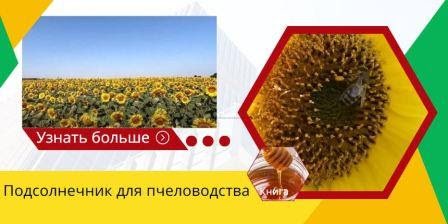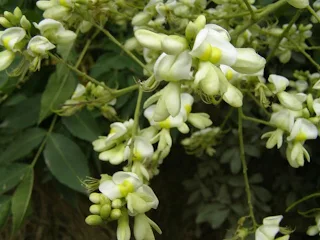Sophora japanese honey plant
The melliferous plant Japanese Sophora has recently been widely used in many countries of the world as an ornamental plant, for landscaping settlements, as a medicinal plant, and is also planted along with other trees and shrubs in protective forest plantations. Honey plant Sophora japonica is valuable for bees in arid regions. Let's talk about Japanese Sophora in more detail.Content
- Description of the honey plant Sophora japonica
- The use of Sophora japonica in protective afforestation
- Japanese Sophora as a honey plant
- When Japanese Sophora blooms like a honey plant
- Sophora japonica honey productivity
.
Description of the honey plant Sophora japonica
Japanese Sophora, or Japanese Styphnolobium (lat. Styphnolobium japonicum) is a deciduous tree of the legume family. Sophora japonica honey plant grows in Japan and China.
Japanese Sophora is resistant to droughts, but is afraid of winds and frosts. Tree up to 25 m tall with a wide spherical crown. The bark on old trunks is dark gray with cracks. Young branches are green, without thorns. The leaves are pinnate, 11-25 cm long, the leaves are 9-17, oblong-ovate, 2-5 cm long. Japanese Sophora is characterized by rapid growth - by the age of 15, the trees grow up to 10 m tall. However, Japanese Sophora blooms at a very respectable age - about 30 years.
In Bulgaria, it is grown as an ornamental plant in gardens, parks, along the streets, and is found almost everywhere.
The use of Sophora japonica in protective afforestation
As an ornamental plant, Japanese Sophora is grown in the Caucasus, in the south of Ukraine, in Central Asia.
Recently, there has been experience in laying plantations of Japanese Sophora to obtain flowers and fruits as medicinal raw materials in Central Asia (Uzbekistan, near Tashkent).
In the last 50 years, Japanese Sophora has been used in the laying of forest protective belts in the steppe regions of Ukraine and Russia. In such strips, the Japanese Sophora is grown together with the white acacia, the highest ailanthus, Gleditsia and other trees and shrubs. Forest belts protect the fields from wind erosion, re-salinization of soils, and make up a considerable supply of honey for apiaries in the steppe.
There is experience in laying protective forest plantations in orchards and vineyards with the participation of Japanese Sophora. Pitsunda pine, pistachio pistachio, sharp-fruited ash, tall juniper were used as the main species for laying forest protection belts in conditions of poor gravelly soils, and elm, Japanese sophora, poplars, fluffy oak, gray, black, walnut, etc. From shrubs, mainly undersized ones should be introduced: Japanese quince, various types of spirea, holly mahonia, steppe cherry, etc. Such plantings protect soils from water and wind erosion in vineyards and orchards.
Japanese Sophora can be widely introduced for landscaping settlements, where it can perform not only decorative functions. Sophora japonica, as well as Robinia false acacia, black poplar, Lannesian plum, resistant to the harmful effects of nitrogen dioxide and has a high gas absorption capacity. What can help improve urban air by absorbing nitrogen dioxide from the atmosphere and converting it into organic nitrogen-containing compounds.
Japanese Sophora as a honey plant
Japanese Sophora is a honey plant, which is very valuable for bees, especially in the southern regions. Sophora flowers produce a lot of nectar even in dry weather and bees intensively visit it, collecting nectar and pollen from them.
The flowers of Japanese Sophora are yellowish-white, small, moth-like, fragrant, collected in loose panicles, reaching a length of 20-30 cm.
When Japanese Sophora blooms like a honey plant
In Bulgaria, the Sophora japonica honey plant blooms in July-August. Flowering is long, which allows the bees to collect a lot of honey from Japanese Sophora.
Sophora japonica honey productivity
How much honey can bees harvest from Sophora japonica? The honey productivity of Japanese Sophora is high and reaches 200-250 kg of honey per 1 hectare.
Japanese Sophora fruits ripen in September-October. Beans with constrictions are green at first, and reddish when ripe, 3-8 cm long.
Japanese Sophora develops better on fresh loamy and sandy loamy soils, and can grow on saline soils. Japanese Sophora honey plant is drought-resistant, shade-tolerant, suffers from cold winds and heavy frosts.
The wood of Japanese Sophora is hard, flexible, yellowish, with a strong brown core. Impregnated with poisonous alkaloids, it does not rot. But its processing has long been ranked among the activities harmful to humans. At home, parquet planks and furniture are made from it.
Sophora fruits are used in medicine. It is used as an infusion for washing, irrigation, wet dressings for purulent inflammatory processes - wounds, burns, trophic ulcers. Sophora buds are used for the production of rutin, which is used for beriberi P, vascular permeability disorders, for the treatment of capillary lesions, etc. Not fully ripe Sophora fruits are harvested in September-October, cut with secateurs, scissors or carefully breaking panicles with beans. Buds are prepared in the same way. Fruits and buds are dried under sheds or in attics, after drying they are separated from various impurities.


Комментариев нет:
Отправить комментарий